
views
Lifting and Cleaning Bulbs

Let the flower and leaves wilt on their own. After a successful flowering, bulbs need time to recharge in order to capture and preserve energy for off-season. To make sure this happens, let the plant wilt on its own, waiting until the flower and leaves fade significantly before lifting the bulb. If possible, wait one to two months after wilting to cut the foliage.

Cut your plant near the soil line. Once your plant has fully wilted, use scissors to get rid of excess foliage. For most bulbs, you can snip the stalk right at the soil line, though others may need to retain a portion of their stem, as is the case with dahlias and tulips.
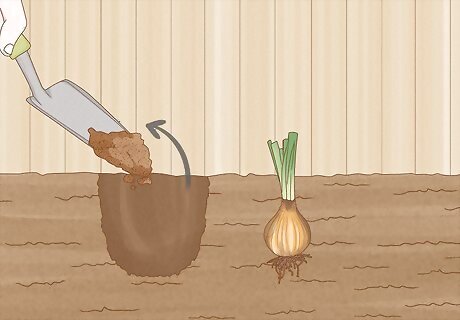
Dig a hole near the bulb. Use a small spade to dig a hole a few inches away from the plant. If possible, do not dig right above the bulb to avoid damaging it. Gently scrape away dirt from the side of the hole until you can see the bulb.

Remove the bulb from the ground. If the ground is soft enough, place your hands around the bulb so you can pull it out with the soil. If not, use your fingers or a spading fork to separate it from the dirt. Though some bulbs are quite sturdy, any damage can make them susceptible to garden pests, bacteria, and fungus. As such, be as gentle as possible when removing a bulb from the ground.
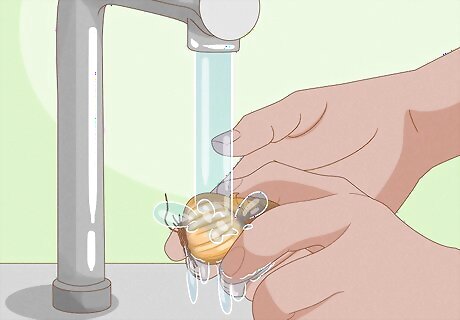
Clean the dirt off bulbs that are not stored in soil. For most bulbs, use your fingers or a brush to remove dirt and soil from the surface. If your bulbs need to be stored with the soil on to stay healthy, as is the case with is menes, dahlias, caladiums, cannas, begonias, achimenes, and others, do not clean them.
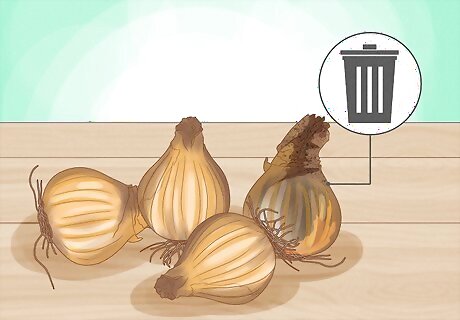
Discard bulbs that show signs of rot or damage. Throw out any bulbs that are infirm, have holes, flake, or show other signs of decay. Diseases can spread quickly among plants, so it is not worth risking all your bulbs to save just one.
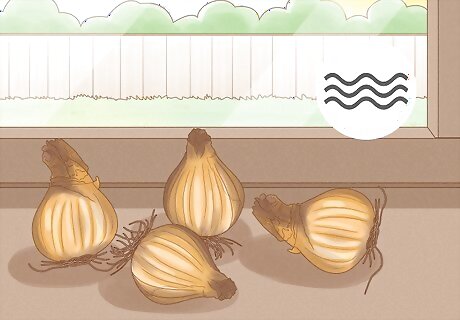
Dry the bulbs in the open air. After cleaning your bulbs, set them on a tray and place them outside to dry, a process known as curing. Depending on the type of bulb, this could take anywhere from a few days (daffodils) to three week (tigridias). If necessary, use a towel or rag to remove any extra dirt after drying. If you uprooted your bulb with some foliage attached, remove it after curing.
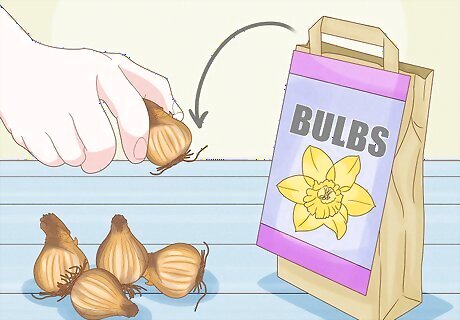
Remove store-bought bulbs from their packaging. If you will be storing bulbs purchased from a gardening shop or website, remove them from their containers. Check your bulbs to make sure everything you ordered is present and in good condition.
Keeping Bulbs Contained
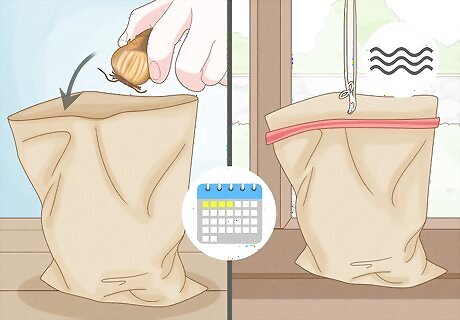
Dry your bulbs for 3-4 days before storing them. You don't want the bulbs to be moist when you put them in storage. To dry the bulbs, place them in a paper bag and set them somewhere that gets a lot of air circulation, like in an open garage or near an open window.
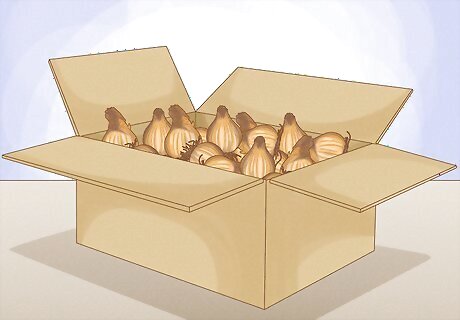
Place your bulbs in a breathable container. To keep your bulbs from decaying, make sure to store them using a tray, paper bag, cardboard box, or similar container. For larger bulbs, a thin mesh bag or sack may also work. Make sure the container lid is left open, that way excess moisture can escape. Avoid any plastic containers as they can cause your bulbs to mold.

Fill your container with a natural packing substance. To keep your plants healthy, store them on top of a layer of sawdust, vermiculite, or peat moss. For plants that require moisture during storage, like those for which the soil was not removed, gently dampen the substance with water. Otherwise, keep it dry. For heartier bulbs like tulips, a layer of newspaper can work as a packing alternative.
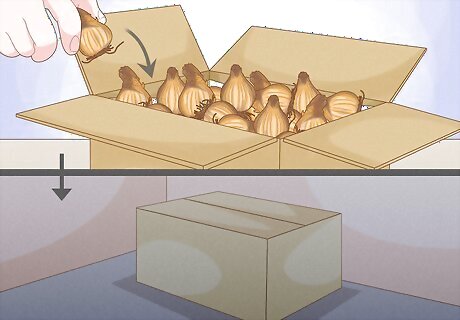
Store your bulbs in a dark, dry place. Keep your container in a dark room free from excessive moisture, such as a basement or closet. This will keep your bulbs from sprouting while in storage.

Store your bulbs at their temperature of dormancy. To make sure bulbs don’t grow while in containment, store them at a temperature that will keep them dormant without causing damage. In most cases, this will be around 50 to 60 °F (10 to 16 °C), though individual bulbs may have specialized temperature needs.
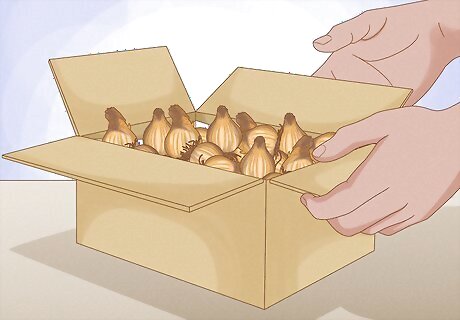
Check your bulbs regularly. A damaged bulb can decay very quickly, spreading any illnesses it may have to neighboring plants. To avoid this, check your storage container once a week and remove any problem bulbs.




















Comments
0 comment